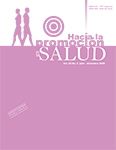Authors
Abstract
Since the end of last year, to be more exact since December 31, 2019, the world has been in shock, is in an interlude or is at “war” as French President Emmanuel Macron made known (2020) (1) , as a consequence of the unexpected appearance of a new virus: the SARS-CoV-2 coronavirus, which causes the COVID-19 disease. Regarding this, one wonders: what, then, is a virus? When checking the Internet, one finds that a virus is a microscopic infectious agent, almost invisible to the human eye and that it can only be captured through special equipment. So why say that we are at war? When it comes to an invisible organism that can be managed particularly from medicine; perhaps they say it because of its spatial implications that are not only objectified in the body, but also in other spaces outside the body such as the city and the house. Today, we can say that an external agent coexists with us, personified.
Keywords:
References
2. Giménez G. Território e identidad. Breve introducción a la geografía cultural. Revista Trayectorias. 2005; 11 (17): 8-24.
3. Larrión J. Teoría del actor-red. Síntesis y evaluación de la deriva postsocial de Bruno Latour. Revista
Española de Sociología. 2019; 28 (2): 56-81.
4. Gadamer H. El estado oculto de la salud. Barcelona: Editorial Gedisa; 2011.
5. Heidegger M. Construir, habitar y pensar. Conferencia. Darmstadt. Alemania; 1951.
6. Velásquez M. Cáncer y territorio. Un recorrido por las continuidades y discontinuidades espaciales proyectadas por este actor no humano. Revista Territorios. 2020; (42): 1-25.
7. Grisales A. El olvido de la cotidianidad. Artesanía, arte y territorio. Manizales: Editorial Universidad de Caldas; 2017.

 PDF (Español)
PDF (Español)
 FLIP
FLIP
 Perfil Google Scholar
Perfil Google Scholar























